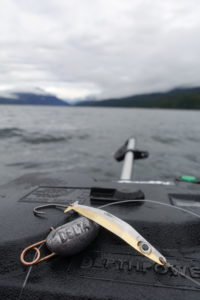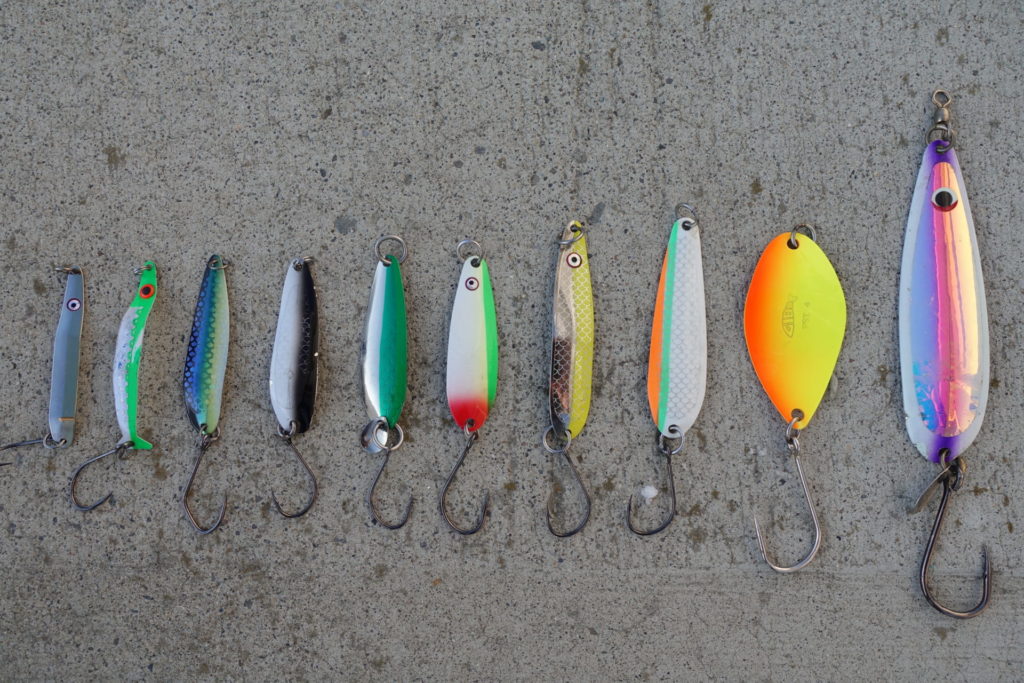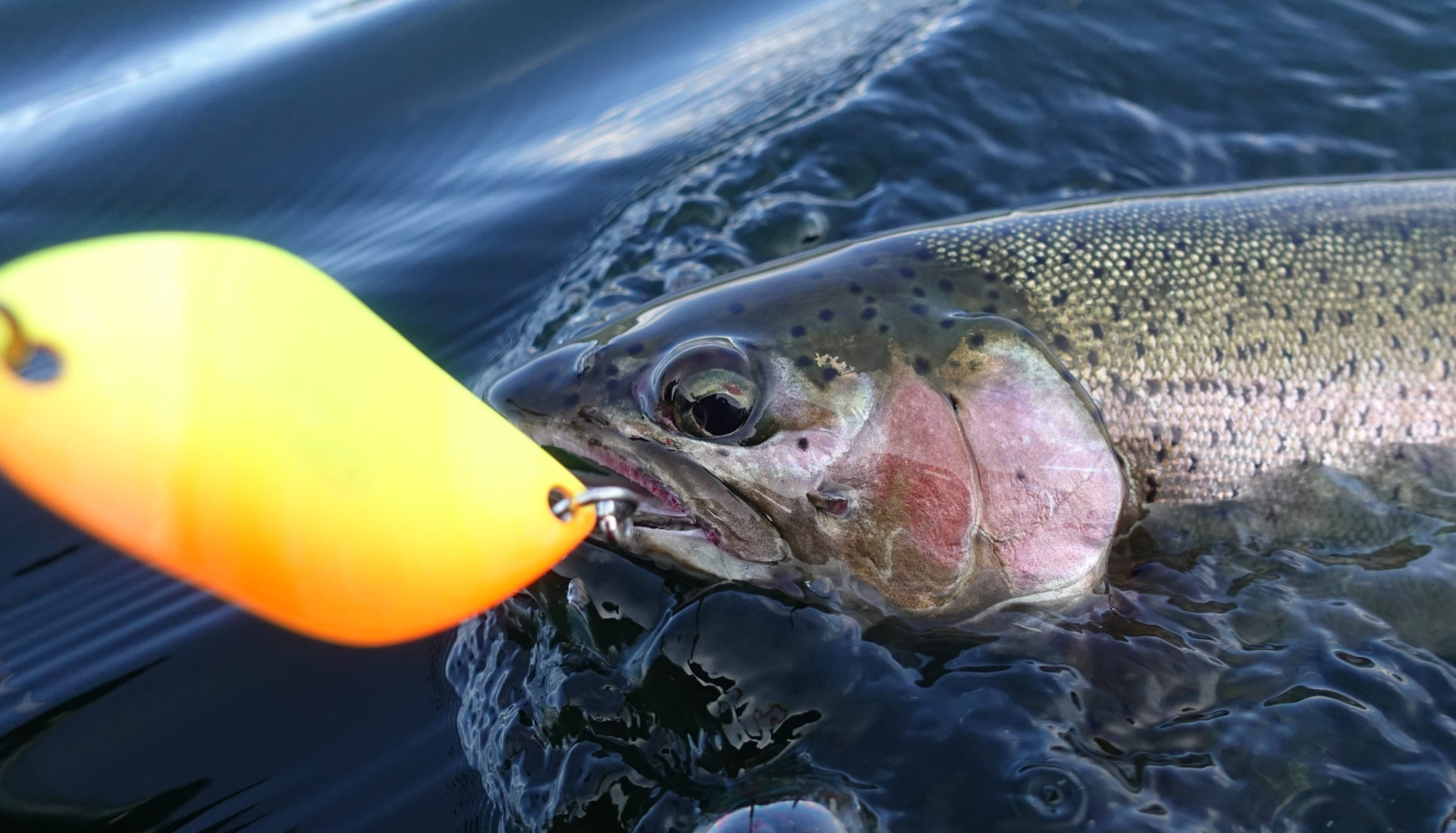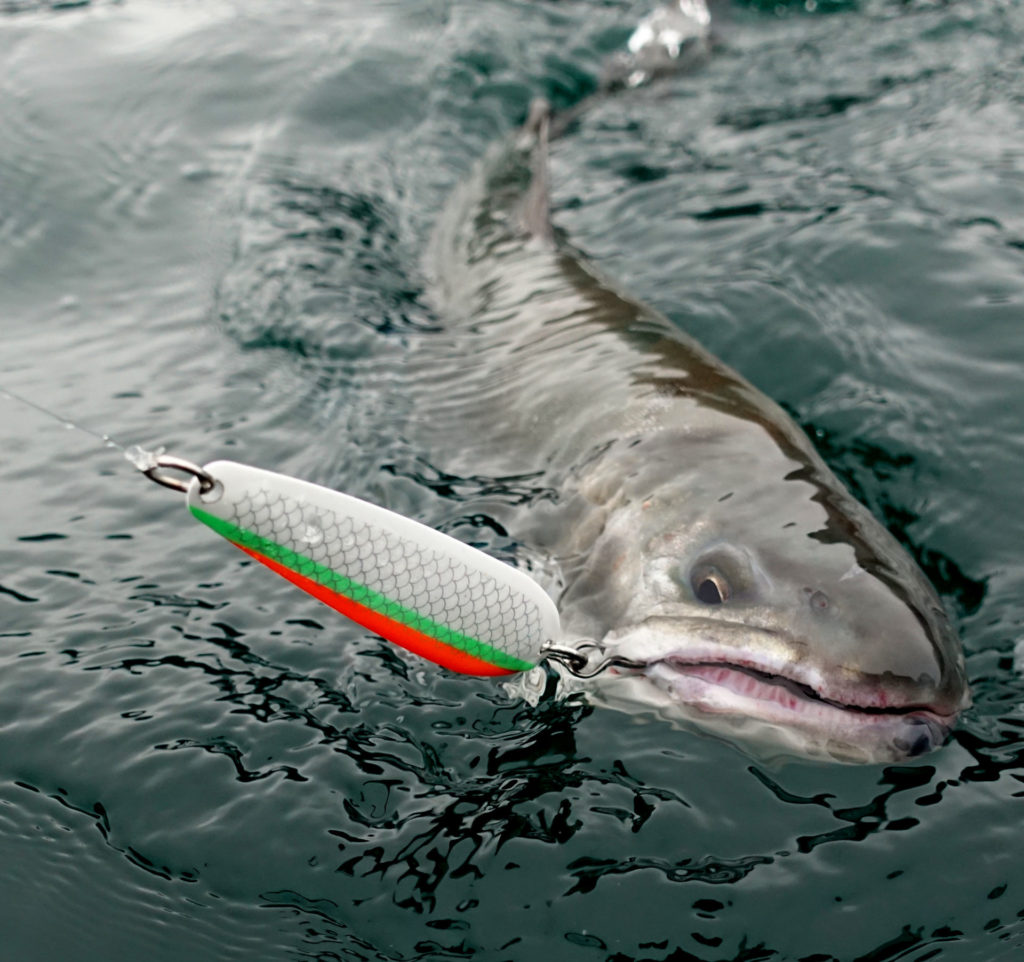“Left rod, left rod; there you go, looks like a good one!” I said with some excitement in my voice as my father reached over to pull the rod out of the rod holder. Just as he got the carbon fiber butt of the rod clear of the rod holder, the line popped out of the downrigger clip and the fight was on.
Advertisement
With the rod arced over, looking like the fiberglass was ready to shatter, the front half began to bounce up and down, with short bursts of line peeling from the single-action reel. Hanging onto the rod with a giant smile, he stood fast knowing there was nothing he could do until the fish tired some.
Advertisement
This excitement is what fishing these large bodies of water is all about. You never know when that big, old trout is going to hit and take you for a ride.
Heading out into the large southern interior lakes of British Columbia is an exciting adventure with a lot of unknowns. The lakes are vast, deep and have many different types of fish to target. There are also many different factors to consider when fishing these lakes, which make them challenging and fun to figure out; and when you do, the fishing can be truly unbelievable, with the potential to hook into some real trophies.
Advertisement
When venturing out to one of these lakes for the first time, you’ll be using different tactics than you would at your local pond. These lakes are big, storms can blow up nasty white caps, and the fish can be very deep at times. A lot of the seasoned fishermen in these waters are running 20-foot boats and larger, sonar units, heavy-action rods, mooching reels and downriggers, or what you would call ocean gear. This can make it an intimidating and pricey adventure to get into; but on fair-weather days, you can be very successful in a small car topper with your favourite spin cast rod and reel targeting fish on the surface or adding a few inline weights to the line to get the lure down a few feet. Don’t let limited gear stop you from getting out and enjoying the water and catching a few of these feisty fish. You never know when that slab of a trout is going to be cruising up high, looking for an easy meal.
Unlike your typical bug-eating trout, these fish are voracious predators with their main diet consisting of other fish. Whether it be bull trout feeding on adult kokanee in Arrow Lakes, rainbows feeding on salmon fry in the Shuswap or fat, old lake trout feeding on juvenile rain- bows in Adams Lake, just to name a few, these trout like to eat. Because of their diet of baitfish, they can pack on the pounds fast, putting on a couple pounds a year.
Plugs, bucktails and hoochies can be found in the tackle box of the most seasoned fishermen on these lakes, but one of my favourite ways to target these monster trout is the trolling spoon. Set up with a handful of different sizes and colours of spoons, you can match the hatch to the baitfish the trout are feeding on at that current moment, with a life-like presentation giving you the best chance at having that monster scream line from your reel.

Where do you start if you want to target these fish with spoons? The first and easiest thing to do is match the size of your spoon with the baitfish in the water during the specific time of year you are fishing. During the spring as the trout become more active, with the longer days and warming waters, kokanee and salmon fry will start to pour out of the spawning areas, creating an abundance of feed for these fish to eat. Using small spoons during this time of year in the one to two-inch size range, near the surface and close to creek mouths or known shore spawning areas, will keep you busy reeling in fish. Even large lake trout that spend most of their time in the depths feeding on full-grown kokanee will venture into the shallows to take advantage of this abundance of feed to fatten up. Don’t be surprised when your rod bends over and line peels off your reel. A couple of my go-to spoons during the spring are the Wee-G and Coho Killers. Their small size and erratic action drive these spring trout crazy.
As spring turns into summer and the water warms up even more, the small bait fish will put on some size and so should your spoon. Bumping up your spoon size to ones in the three to four-inch size range will be most effective for the majority of the fish you will be targeting throughout the summer months. Yes, there are times when I will pull out the big five-inch spoons to mimic the full-grown kokanee that these big trout feed on, but more often than not I find the medium spoon size will get the attention from that large rainbow that has a full-grown kokanee in his belly. Kingfisher, Razorback and Skinny-Gs are a few spoons that you will find hanging off the end of my line throughout the summer months. All come in a wide variety of colours, patterns and finishes that will help make you successful – from the surface to the deepest depths these fish can be found at.
As the days grow shorter and the water cools, the fish turn on their feed bags and gorge themselves for the oncoming winter. This is when the big, five to six-inch spoons come out on a more regular basis. Even average-sized trout will hit these giant spoons not knowing if it will be their last big meal of the year. Some of my favourite and appropriately named mammoth-sized spoons are the Titan and Wonder spoons.
Into winter, the fish can become very lethargic and picky feeders. Some days they will only feed an hour or so here and there, which can make these fish difficult to figure out. Be ready to experiment with your spoons. There are some days when I will go through the entire tackle box without a bite. That’s winter fishing for you.

The next consideration in choosing a spoon to use is colour and finish. The hard-and-fast rule of dark colours on dark days, like a Herring Aid finish, and bright colours on sunny days, like a Nickel Chartreuse, is a great guideline to start with. This guideline also applies to depth. The deeper you’re fishing, the less light there is to reflect the spoon’s colour, causing that bright yellow or pink spoon to look like a solid grey at 80 feet and deeper. With this, I prefer more high-contrast finishes or ones with glow paint when fishing at these depths. I like the Outfitter with its glow back and the Gold Nuggets 50/50 split of nickel/brass finishes when targeting these deep fish.
The addition of glow and UV paint to the fishing tackle world has greatly increased the visibility of these spoons at greater depths, but remember that these glow paints need to be “charged” before sending them down, so either lay them out in the sun for a while or use a flashlight to get the most out of the glow feature.
Just like the fly fisherman pumping a fish’s stomach to match up a chironomid, matching the size and colour of the bait fish the fish are currently feeding on can be done in a similar way by looking in the fish’s mouth, or if your catch is headed to the BBQ, gut the fish right away and match your spoon to the size and colour with what you find. But remember, there are always those days when matching the hatch does not work and you will have to try something completely different. Showing the fish something it has never seen before can often get it to hit out of curiosity. Having a couple of funky-coloured spoons in your arsenal, like a No Bananas or Fire Orange Chartreuse pattern, can help you get that bite. This tactic has saved me from more than a few skunkers over the years.
What speed and how deep? These are the most-asked questions I get and the most important to success in my opinion. How deep is the easiest to deal with, but the most expensive. Fish where the fish are! A good sonar unit and a downrigger is the only way to do this, as the trout can be at 100 feet or deeper. Being able to mark fish with your sonar, pinpoint the depth and drop your spoon in front of their face using the downrigger is essential when they are deeper than 20 feet. If you’re starting out and can’t afford a sonar unit and downriggers, don’t worry; there are always fish feeding near the surface all year long. Either long lining a spoon or running an inline weight will still get you to fish that are in the top 20 feet of water. Even with downriggers, many anglers still use in-line weights ranging from one to four ounces during the cooler weather or early mornings in the summer when the big boys come up near the surface to feed.
Now that we know how deep we are going to fish, how fast are we doing it at? A quick Google search will tell you that rainbows and bull trout like two-and-a- half to three-and-a-half miles per hour and lake trout like one-and-a-half to two- and-a-half. On average, I troll a bit slower than both of these examples, but I have also trolled faster with success too. The speed that gets a bite can change hour to hour throughout the day. So I like to change my speed often by trolling in a sweeping ‘S’ pattern; or if I want to hug tight and parallel the shore line, I will use the throttle on my trolling motor to speed up and down, producing a similar action to the spoon as the ‘S’ pattern method produces. Never get fixed on trolling one speed or in a straight line for hours on end, it will be the quickest way to an un-successful day.
Lastly, here are a few of tips that help me get more fish to the boat.
- Use the appropriate-sized hook for your prey. Most spoons on the market are marketed to salmon fishermen and come with salmon-sized hooks, usually a 3/0 or 4/0 hook. If you’re fishing for big bulls and lakers, you’ll be fine with the large hooks, but to improve hook-ups on rainbows, size down to a 1/0 or even a size 1. They have smaller mouths in general and the smaller hook provides a better hookset with less foul hooked fish.
- Trout might not be big schooling fish like salmon, but don’t be afraid to use flashers and dodgers for them. You’re fishing big water and sometimes you’ll need that extra flash to get the fish to come in for a closer look at your spoon. I will often run flashers as “dummies” from the downrigger ball instead of having them inline like the typical way they are rigged.
- Have your tackle organized. I like to pre-tie my spoons with leaders and have them sorted by colours/patterns on leader boards, so they are easy to find when I want to switch something up.
Lastly, and the biggest tip I can give on being a successful spoon fisherman, is to have fun when out on the water. At the end of the day, it’s just fishing. And if you don’t figure the fish out today, they will be waiting for you tomorrow and you’ll be a day wiser.

